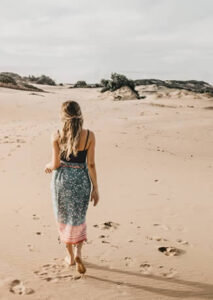
Osteoporosis Awareness Month: Bone Health and Prevention
May is Osteoporosis Awareness Month. Did you know that Physical Therapists are an essential member of your interdisciplinary care team? With life expectancy increasing it

September is Healthy Aging Month | Menopause and How it Affects Your Genitals
September is Healthy Aging Month! In recognition, this blog will talk about Menopause and how it can affect your genitals and sexual function. What Happens

Pelvic Floor Physical Therapy for Menopause
September is Healthy Aging Month! Curious about pelvic floor physical therapy for menopause? Read on. You’ve probably already considered a visit to your primary care

The History of Estrogen Therapy
The History of Estrogen Therapy – A Cure for Hot Flashes, Insomnia, Vaginal Discomfort and More? Hello, menopause! If you’re experiencing any of those symptoms, your

Return to Sex after a Hysterectomy
Getting back to activities like sex after a hysterectomy can be intimidating. Learn what a hysterectomy is, how it can affect your sexual function, and

Management of Genitourinary Syndrome of Menopause | Non-Hormonal Treatments for GSM
There Are Several Options For Non-Hormonal Treatments for GSM. Some include hormones, while others do not. Today we will review some non-hormone treatment options. As

What is Genitourinary Syndrome of Menopause (GSM)? And Why Every Woman Should Know About It
Every person with a uterus will experience menopause during their lifetime. Genitourinary syndrome of menopause (GSM) is a term that describes the different genital, sexual,

Menopause and Pelvic Health
What are the Links Between Menopause and Pelvic Health? Menopause is a period of life transition for many of us. Today we will review what menopause

Scar Management and Desensitization After C-Section, Hysterectomy, and Laparoscopic Procedures
Tips For Scar Management and Desensitization After C-Section Also After Hysterectomy and Other Laparoscopic Procedures After delivery via cesarean section, hysterectomy or other laparoscopic

